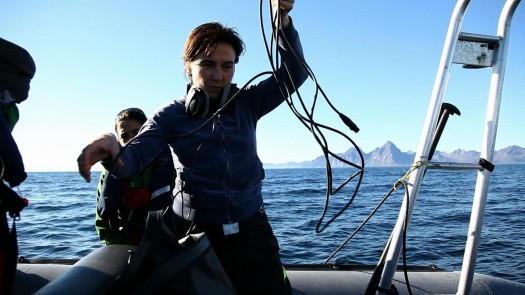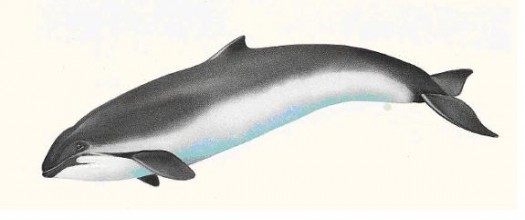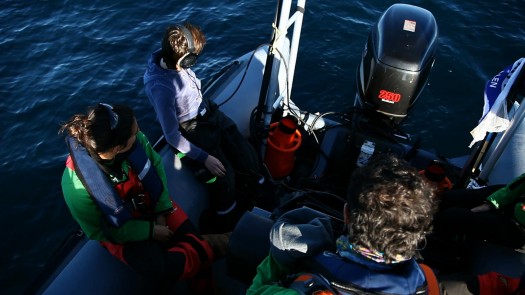The SOUND of whales II
Today we have enjoyed our second day with Heike. Yesterday she told us what is her job and today we have gone out in his boat for some watching and listening the animals language.
We had a problem, because before to leave, Heike has realized that motor wires were cut. So more than one occasion they have tried to sabotage the boat poking, it has not been hesitant to see what had happened. Do not forget that Heike and his work are not valued positively, because Norway is a country in which whaling is permitted and there are several ships engaged in the business.
Also, in the Lofoten islands, there are several companies dedicated to conducting “safaris” cetacean sightings for tourists. These companies could provide dates for investigations of Ocean Sounds, but instead of it, they see Heike like an “enemy” or competition.

After several hypotheses, the mechanic found that it was not sabotage and we could go out to sea to demonstrate how to use the hydrophone. With this device you can get to capture the underwater sounds of 60 miles (100 km) to the round, being able to listen many of the of whales and dolphins “word”. The power to hear sounds as far away is sometimes a problem, then I will hear the noise of the engines of all vessels around, and this is the case today.
We have moved to another area where we found four copies of the common porpoise (Phocoena phocoena), two mothers and two babies. Adults are 1.50 to 2 meters, so, while not jumping completely out of water when they swimming in the surface, you can get to see the whole body. They are much more timid than most of the dolphins, so they not so close to the boats.

Heike has told us that this is a specie not as social as other cetaceans, so copies can be found solitary or in small groups. This causes little or no communicating, because they do not have much to say as the species that live in large groups and therefore must communicate more often.

This is an animal that lives in coastal areas and we can found them in the Bay of Bizkaia, although it is difficult to sight. Do not attract attention to your speed or by leaps and bounds, and they swim slowly and make dives of several minutes each time it is immersed. Her breath is hard to see, but it sounds like a little sneeze.
More information: www.ocean-sounds.com and www.gabi-reichert.de












